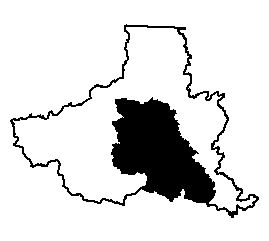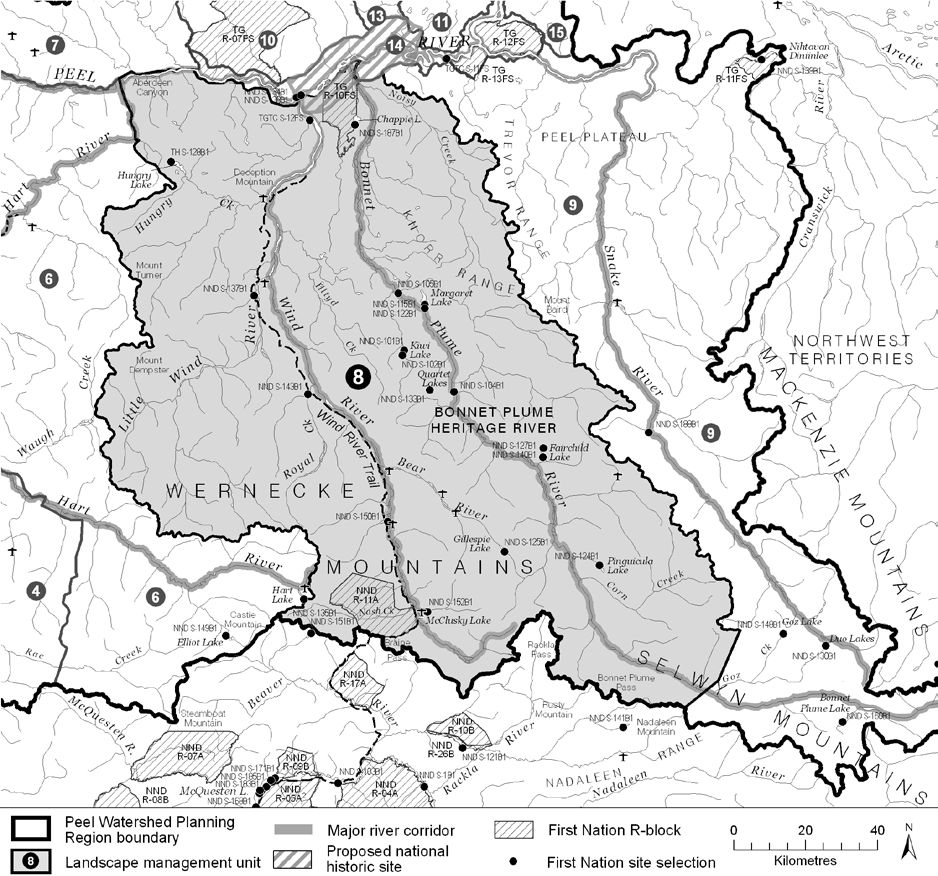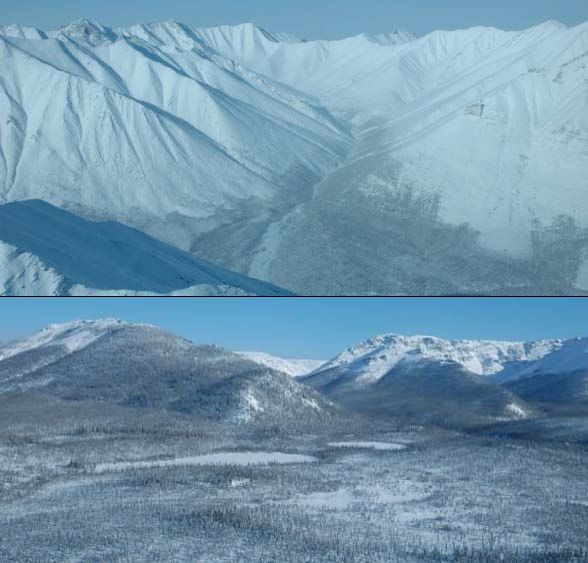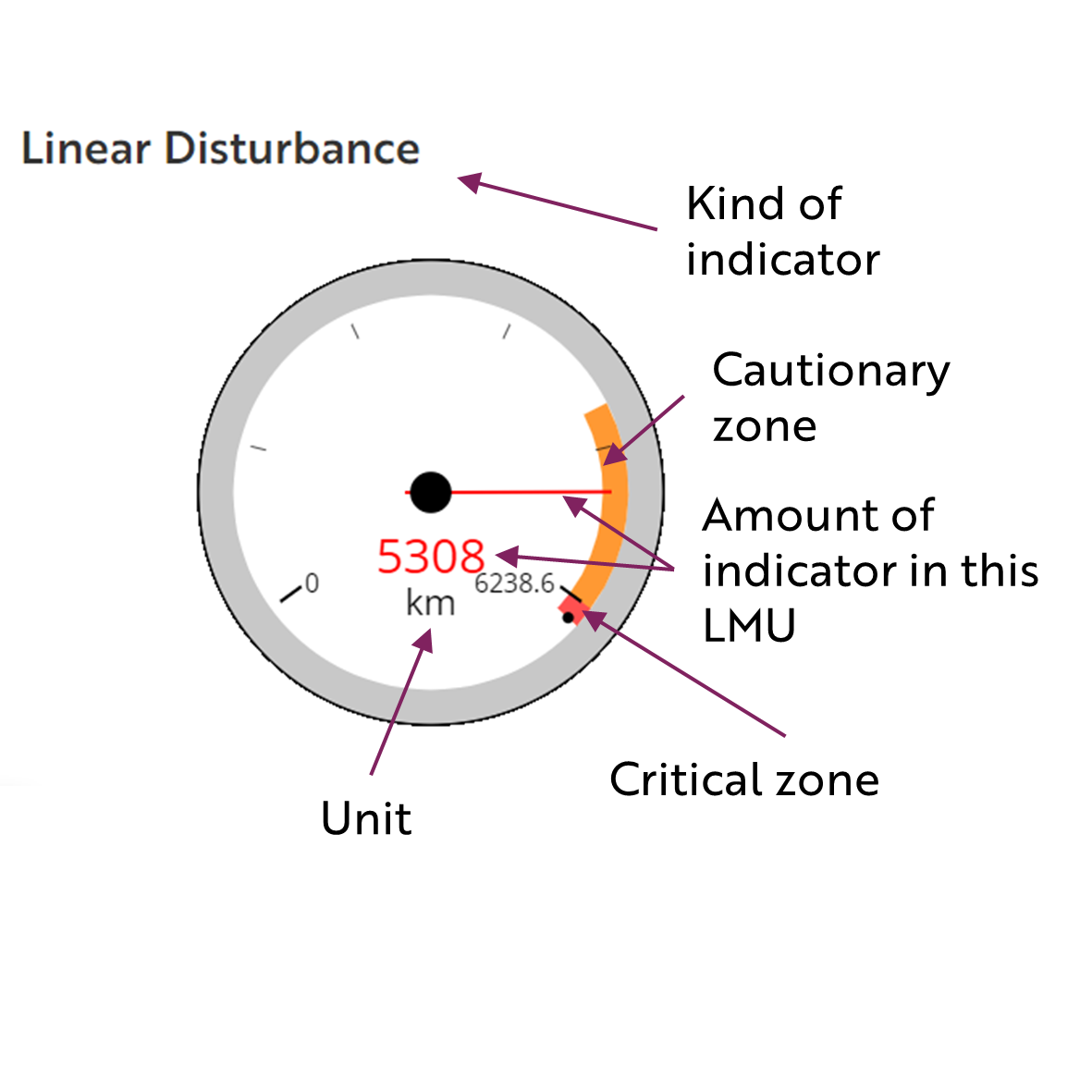PEEL WATERSHED PLANNING REGION:
LMU 8: Wind and Bonnet Plume Watersheds
Soon to be known as Tagé Héninlin (Nijin Han Niinlaii) Territorial Park
Land Use Designation
Special Management Area
Land Status
Non-Settlement Land, NND Settlement Land (R-11A, S-101B, S-102B, S-104B, S-105B, S-115B, S-122B, S-124B, S-125B, S-127B, S-133B, S-137B, S-138B, S-140B, S-143B, S-150B, S-152B, S-187B), TG Yukon Land (R-10FS, S-12FS), TH Settlement Land (S-128B)
Traditional Territories
Na-Cho Nyäk Dun, Tetłit Gwich’in Primary Use Area
Area
19,166 km2 (28% of Region)

Implementation News
- This LMU will be combined with LMU 9 into a single Special Management Area. It will be legally designated as a protected area called Tagé Héninlin (Nijin Han Niinlaii) Territorial Park. When this happens the boundaries will change slightly. Those shown below and on our interactive map will be slightly inaccurate.
- A hydrometric station has been established or reactivated at Hart River near Hungry Lake.
- The Wind River Trail has been delisted as a public road and is closed to traffic (by regulation) and is no longer considered a public highway.

Objectives
- Wilderness character is maintained.
- Wilderness tourism and big-game outfitting industries are encouraged in a manner consistent with protection of sensitive ecological values, and within their carrying-capacity.
- Community cultural activities practiced without significant disturbance.
- The core range of the Bonnet Plume caribou herd continues to be able to support the historic full size of
the herd.
Rationale for Designation
- The Bonnet Plume River is a Canadian Heritage River.
- The Wind River watershed, Hungry Lakes, Chappie Lake, Margaret Lake, and Quartet Lake were recommended for consideration for protection by the Peel River Watershed Advisory Committee.
- Numerous culturally important places and First Nation traditional travel routes.
- Two large and mostly pristine watersheds that are well suited for wildness tourism and big-game outfitting.
- The Bonnet Plume caribou herd is of the Northern Mountain ecotype, which is listed as “Special Concern” under SARA; most of its range is within this one unit.
- Wide-ranging species like caribou and grizzly bears need large tracks of largely unfragmented landscape. This unit may offer an unusual opportunity to conserve sufficient habitat for these species.
- Large unfragmented landscapes with N-S oriented valleys and large elevation ranges are well suited to allowing species to shift their ranges in response to climate change.
- Despite apparently high mineral potential, remoteness and other factors have precluded any development to date. Future mineral development is therefore speculative.
- Aerial access for mineral exploration has already impacted other land-uses; road development that is required to support mining would be almost irreconcilable with them.
- Though large numbers of mineral claims may be an impediment to the zoning of this unit, most were established following the rise of base metal prices between 2004 and 2008.
- Low oil and gas potential due to small size, remoteness, and likely lower quality of the Bonnet Plume
Basin.
Cumulative Effects Thresholds
Relative to LMU Size*
Surface Disturbance (%)
Linear Density (km/km2)
Current disturbance (2020)
0.0316
0.0376
Cautionary
0.0
0.0
Critical
0.0
0.0
On the ground amounts**
Surface Disturbance (km2)
Linear Disturbance (km)
Current disturbance (2020)
6.05
720.2
Room under cautionary threshold***
0
0
Cautionary
0
0
Critical
0
0
*These are proportional to the size of the LMU, and correspond to table 3-2 of the Approved Plan. They are measured in the % of the LMU that can be disturbed (“Surface Disturbance”) and in km/km2 (“Linear Disturbance Density”).
**These are amounts that can be measured and apply to the whole LMU and would be more familiar to project proponents and regulators. They are measured in km2 of disturbance and in km of linear disturbance (e.g., roads, trails and cutlines).
***How much more disturbance can be added to existing disturbance before the cautionary threshold is reached.
Surface Disturbance
Linear Disturbance
Cautionary
Critical
Biophysical Setting
Setting
Rocky mountainous terrain with deep forested valleys and large rivers that give way to forested plateaus with many wetlands
Ecoregions
Mackenzie Mountains, Peel River Plateau, some North Ogilvie Mountains and Eagle Plains
Bioclimatic Zones
Taiga Wooded, some Taiga Shrub and Alpine
Image Explanation
Rugged Wernecke Mountains with narrow forested or shrubby valleys are characteristic of the headwaters (top), while flatter foothills and plateau are characteristic of the lower reaches (bottom). (YG photo)

Ecological Resources
Caribou
High value winter habitat, key winter, and migratory use areas of the Bonnet Plume herd concentrated along forested valley bottoms, largest concentration of key use areas; extensive moderate winter habitat potential for the Porcupine herd – little use east of Hungry Lakes in recent decades.
Moose
High habitat suitability and use in valley bottoms; moderate-low late winter habitat suitability elsewhere.
Marten
High habitat suitability in valley bottoms and in lower plateaus; low-nil late winter habitat suitability elsewhere.
Sheep
Large concentration of high value winter habitat and documented habitat use in upper and mid portions of unit. Scattered mineral licks and associated trails.
Fish
Fish presence potential in larger tributaries, several known fish occupancy and spawning sites, and winter open water sites and surface ground water.
Grizzly Bear
Moderate to high habitat suitability in riparian areas and high elevation subalpine zones.
Peregrine Falcon
High potential for peregrine falcon foraging, some nesting habitat in the lower plateau areas.
Birds (General)
High value waterbird habitat in riparian areas; breeding bird species richness highest along rivers and in the lower plateaus; variable number species of conservation concern.
Vegetation
Wide range of vegetation. Moderate rarity/endemism along the transition between mountains and plateau.
Wetlands, Lakes and Riparian Areas
Several larger lakes in the headwaters (McClusky, Gillespie, Pinguicula, Fairchild, Quartet, Kiwi, and Margaret Lakes) and on lower reaches (Hungry and Chappie Lakes). A territorially significant wetland complex between Bonnet Plume and Wind Rivers around Chappie Lake.
Permafrost
Continuous permafrost is predicted, likely with high water content on the flatter plateau areas of the lower Bonnet Plume and Wind Rivers.
Special Features
Regionally significant concentration of mineral licks; documented and possible wildlife passes (especially for sheep); caribou migration corridors.
Heritage, Social and Cultural Resources
Heritage Resources
Numerous travel corridors and cabins (NND and TG). Culturally important sites for TG, VGFN.
Palaeontological Resources
The coal bearing deposits of the Bonnet Plume Formation in this region have high potential to be associated with Mesozoic plant and vertebrate fossils. There have been woolly mammoth fossils collected on Noisy Creek in the past. The carbonate rocks of the Road River Formation in this region have known trilobite fossil localities and have high potential to yield further Paleozoic fossils.
Economic Development
Transportation and Access
Wind River winter trail; conceptual access routes run along the Wind River to Eagle Plains and also cross the unit linking the Hart River to the Little Wind, Bonnet Plume and Snake Rivers. Several airstrips and opportunities for floatplane landing.
Traditional Economy
NND and TG traditional harvesting and wildlife areas.
Recreation and Tourism
High value wilderness paddling, hiking and wildlife viewing especially in upper mountainous areas; Canadian Heritage River.
Forestry
Little potential for forestry.
Big Game Outfitters and Trapping
Midnight Sun Outfitting Ltd, Bonnet Plume Outfitting Ltd. and Widrig Outfitting Ltd. Extensive high value hunting in mountainous areas.
Oil and Gas Resources
Noisy Creek drainage is part of the Peel Plateau and Plain Basin and has moderate potential; lower reaches of the Bonnet Plume and Wind Rivers are within the Bonnet Plume basin, which has low potential.
Mineral Resources
All of the region’s coal licenses; several coal deposits; approximately 460 (2023, 5430 in 2011) quartz claims; some iron potential; mostly moderate with some high copper/gold/uranium potential; moderate to high zinc-lead , one proven deposit.
Special Management Considerations
- The Wind River Trail accesses the unit from the south. Use of this trail by commercial motor vehicles other than snowmobiles is not allowed.
- The upcoming Northern Mountain Caribou Action Plan may be relevant to management of land-use activities in this unit.
- The Bonnet Plume Heritage River Management Plan provides further direction for management of land-use activities in this unit.
These gauges show how much of each disturbance indicator there is in the LMU with the needle and the large number near the middle. The colours indicate disturbance level zones or thresholds. If the needle is in the white zone, no threshold has been reached.
The Dawson Planning Commission gives a details of their similar (but slightly different) Cumulative Effects Framework on their website.

Cautionary
Critical
